Standard Grade Physics contains the following units;
- Telecommunications
- Using Electricity
- Health Physics
- Electronics
- Transport
- Energy Matters
- Space Physics
The sections below contain links to revision summary notes, PowerPoint slides and extra questions to test your readiness for the exams on each of the areas listed above. If you need help to view a PowerPoint file, click here to look for the PowerPoint viewer on Microsoft’s site.
Alternatively, why not download the free OpenOffice.org office suite? It opens PowerPoint, Excel & Word files. You can also create your own files and save them so that you can open them in school with Microsoft programs, clever or what?
You will need to download Adobe Acrobat Reader if you don’t have it on your home computer already.
Check this blog post to find out how you can get free physics revision software for home use only.
In the summary notes for each section you will find some boxes where the background is grey instead of white. These grey sections contain material that applies to the Credit paper only. If you are working towards a General level award you can skip the grey sections.
Some of the pdf files have been created by converting PowerPoint files. In places where the original slide is animated, you will need to read several pages in a row to see the full slide contents.
You will be given a copy of the SQA Physics Data Booklet for the exam. It’s a good idea to know what it looks like before you arrive at the exam room. You can download a copy here as a pdf file.
If you have any questions, feel free to leave a comment for me on this page. I will do my best to answer you quickly. Please read the note at the bottom of this page if you have problems opening the files. Leave a comment on this page if you still can’t get the files to open and I’ll see if I can help you.
Here is a set of whole course summary notes from James Gillespie’s High School in Edinburgh.
Telecommunications
Remember that there are only really two triangles you need to know for this unit;
- speed/distance/time
- speed/frequency/wavelength
Make sure that you put everything into the correct unit before using these equations, e.g. change kHz into Hz. You will also need to know the speed of light in air (300,000,000m/s) and the speed of sound in air (340m/s).
Use this information to calculate the distance between the lightning flash and the video camera used to record this video clip.
Lightning from Daniel Dingemanse on Vimeo.
These files might help.
whole unit notes
telecommunications-summary-notes.pdf
telcommunication revision slides
Telecommunications learning statements and extra questions
how TV works
Here is an example of coils being used to steer a spot around a screen.
raster scan from mr mackenzie on Vimeo.
Can you spot the difference between this scanning pattern and the pattern used in a TV set?
Total internal reflection
total internal reflection from mr mackenzie on Vimeo.
Curved reflectors are often used to produce a strong beam of energy in one direction. The shiny backgrounds behind the bulb of a car headlamp, torch or halogen spotlight are examples of curved reflectors.
We use curved reflectors to communicate with satellites in orbit around the Earth. Signals are sent from a large curved reflector on the surface to a curved receiver on the satellite. The satellite can relay the signal to another ground station or pass it to another satellite before it is sent back to another ground station.
This video shows a simulation of a satellite in geostationary orbit.
A geostationary satellite is not actually stationary. By rotating at the same rate as the Earth, the satellite always appears to sit in the same point in our sky. This is quite handy, since it would be a nuisance if we had to move dish aerials to follow the location of a satellite broadcasting our TV signals.
The video below is designed to show you what the view from a geostationary satellite might look like. Since the satellite and Earth rotate at the same rate, one full rotation every 24 hours, the satellite is always over the same point on the Earth’s surface.
Using Electricity
Here is a diagram of the most important language for the electricity topic. You can view a larger version by clicking on the image below.
This unit contains more equations but remember that the booklet you are given during the exam will have these, so don’t panic if you forget one of them.
This article gives an introduction to ac electricity.
electrical appliances – power rating and safety features
electrical safety – this is really meant for Standard Grade Science but I include it here because the descriptions of each safety measure are really good.
Watch this BBC Bitesize video about the ways that fuses and RCDs help protect us from electrocution.
Here is a short video about resistors.
MAKE presents: The Resistor from make magazine on Vimeo.
resistance and graphs of current-voltage
current and voltage
Here is a video about Ohm’s Law.
Untitled from make magazine on Vimeo.
Notice how the presenter converts the current from mA to A before doing the calculation in his example.
There are useful set of series and parallel resistor activities here. Use the next button or follow links in the left sidebar to progress through the topic.
electricity summary notes
electricity summary slides
electricity learning statements and extra questions
who wants to be a millionaire – electricity quiz – don’t click through too quickly or you might show the correct answers before you have had a chance to think about the question.
This video shows you how to build a simple electric motor and gives a brief explanation on how it works.
I’ve posted a bit more about electric motors here.
Health Physics
Here are some key terms you will need in your Health Physics vocabulary. Click on the image for a larger version.
health physics summary notes
health physics revision
health physics learning statements and extra questions
Infrared is useful for taking thermograms (pdf) to learn about where heat is lost or where something is getting too hot.
A BBC article about how the police are using thermal images to find people who grow “illegal plants” in their homes.
Here is a brilliant video of an ultrasound scan of a pregnancy at 18 weeks (that’s almost 1/2 way through). Keep watching and you’ll see the baby’s face, hands, feet, ribs and….. well, just watch it and see!
Ultrasound isn’t just for human babies, vets use it too.
I’ve written about x-rays and ultraviolet radiation in my blog.
This excerpt from Bang Goes the Theory shows the damage that radiation can do to cells. It also shows how radiation can be used to treat tumours inside the body – this is called radiotherapy.
radiotherapy revision (ppt file)
BBC video about Alexander Litvinenko – former Russian spy who was poisoned with alpha radiation
Here is a video that explains how a Geiger-Müller tube works.
How to do radioactivity/half-life calculations (pdf)
Electronics
Use the diagram below to make sure you know the terms you will need for the electronics unit. Click on the picture for a larger version.
Here is a video about LEDs
MAKE presents: The LED from make magazine on Vimeo.
comparison of LEDs and bulbs
electronics summary notes
electronics revision powerpoint slides
electronics learning statements and extra questions
High School of Glasgow’s electronics summary notes – powerpoint version & pdf version
transistors capacitors and time delay circuits
Transport
Some of the key vocabulary for this unit is shown in the diagram below. Click on the picture to view a larger version.
transport summary notes
speed time graphs revision slides
acceleration revision slides
transport learning statements and extra questions
forces
Newton’s 1st law causes a headache for a lorry driver in this video
animation showing effects of air resistance
work, power and energy
potential energy examples
kinetic energy examples
conservation of energy in a roadrunner cartoon (youtube clip)
Friction: here are 3 clips about friction from the BBC programme Bang goes the Theory
and look what happens when cold weather removes the friction that helps you to control your car!
Energy Matters
Here is some of the vocabulary you will need in this unit. Click on the image below for a larger version.
ban the lightbulb (BBC News article)
energy matters – learning outcomes and homework questions
how solar panels are made (youtube)
wave power trials near Orkney (youtube)
hydroelectric power – how it works (youtube)
 hydroelectric power plant animation (click for full size)
hydroelectric power plant animation (click for full size)
using fossil fuels to produce electricity (youtube)
how nuclear power works (youtube)
nuclear reactor simulator – free download for windows pcs
simple electricity generator (java applet simulation)
transformer interactive animation
electricity transmission – National Grid card sort activity
transformer law (powerpoint)
heat summary with worked examples
heat and temperature are not the same thing – a site to help you understand the difference between heat and temperature
Space Physics
space physics pupil pack (contains list of learning outcomes for the unit and additional homework questions)
colour temperature line spectra summary of the information we can get from the light received from any star (surface temperature of the star, what the start is made of, etc.)
orbits and gravity (animation showing planets in our solar system with some gravity information)
At Credit level, you should be able to draw a ray diagram to show how a convex lens produces an image. These video show you how to do that.
how to draw a ray diagram from mr mackenzie on Vimeo.
ray diagram for objects closer than 1f from mr mackenzie on Vimeo.
Rockets rely on Newton’s 3rd law of motion. Read my blog post about Newton III.
Here is a Sixty Symbols video about orbits and Yuri Gagarin – the first man in space.
Space Shuttle
You are expected to know that the friction encountered by the orbiter as it re-enters the atmosphere has the effect of transforming the vehicle’s kinetic energy into heat energy. The orbiter slows down as its kinetic energy is lost.
This article includes a photo taken from the International Space Station that shows just how high the temperature of the orbiter can get. This high temperature during re-entry is the reason those special black tiles are needed on its underside.
This short video shows a night-time re-entry over Texas, with the orbiter on its way to land at the Kennedy Space Centre.
I wrote a blog post about re-entry into the Earth’s atmosphere.


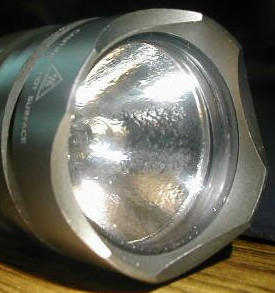

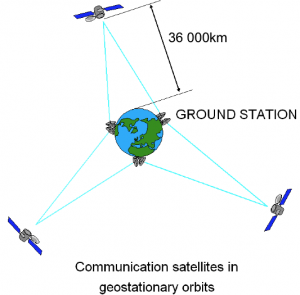
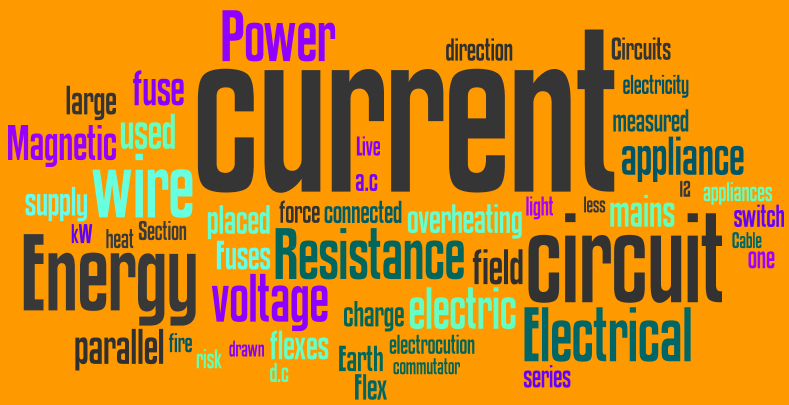
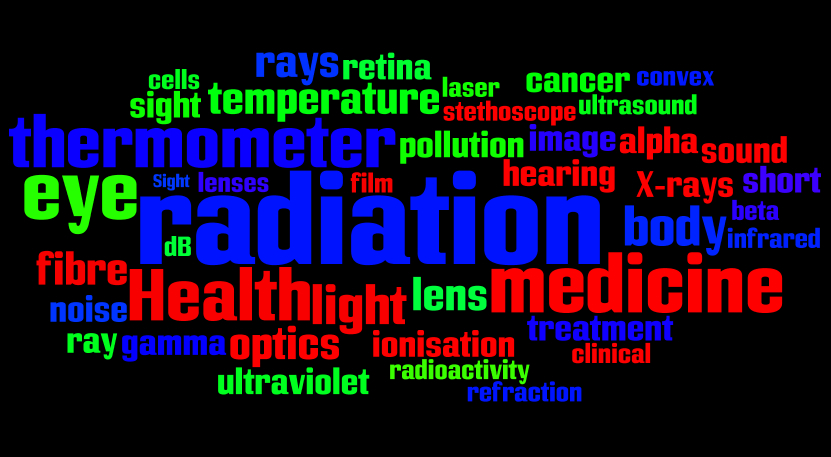
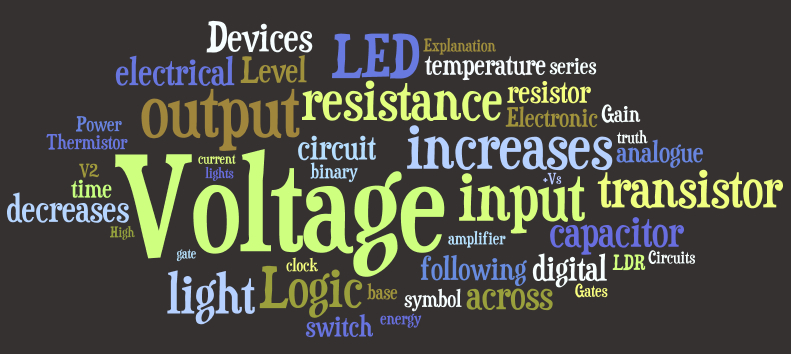
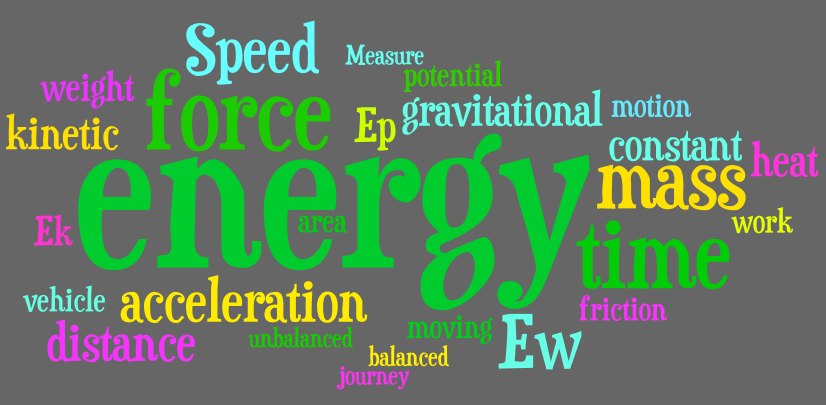
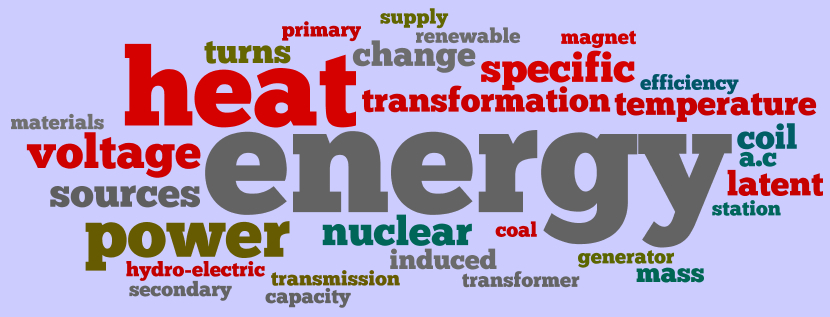
this website is absolutely brilliant
i am very impressed and i will consider to use it again in the future
it is very helpful but it would be better if we had more summary notes for the rest of the topics which will be coming up for the real standard grade exam.
-thanking u!
Hi Deepthi,
I have added some note for Unit 6 – Energy Matters. More material to cover Unit 7 (Space Physics) will follow shortly.
Have you concidered a forum?
Hello Bruce,
Yes, I have considered one.
Hi i was wondering if you have any similar information about the Space Physics Topic that they are now teaching. Anything would be much appreceiated. Thanks.
Hmmmm.
Mr Mackenzie. Good website with great resources but I still haven’t forgot the incident with you and Mrs. Glasgow in Dunkeld – therefore I’ll say you’ve got a lot of rubbish up here!!
Superb site, far better than bitesize anyway.
Summary notes are excellent and dead clear.
Came across this site as I left all my notes jotters in school today, and my exam is tommorow. You’ve probably just saved my ass though, I’ll let you know how I do though, haha.
Thanks.
=D Yehh Rather Lacking In Notes Atm With All The Exams God Knows Where Half Of Them Have Gone … Proved Very Useful And Organised Thanks!
Thank you, good website layout i see your into IT. This will be handy to revise over.
best revision site ever :O 🙂
got a test tomoro and this makes revision sooo much easier than boring old notes
thanks for makin this 😛
great site
no its not, i think its a great site
this site really helped with my telecomm test last week
Thanks for all the revision help, it’ll all really help me to get good marks in the exam. 🙂
this site realy helped me with my physics standard grade test today. Thanks!
Do you have any other health pyhsics notes?
TA! 🙂
I’ve added some more files to the health physics section now, including some videos. If there is something specific you want help with, please leave a comment and I will see what I can do.
just wondered if you could put up some extra information on how to calculate half life without a graph.
Thanks
Stephanie,
I have added something to the Health Physics section. Hope this helps.
it helped a lot 🙂
thanks
This is such a good website 😀
this helps soo much because my class are failing physics because our teacher cant teach =/
thanks !!!
This is such a great website i got everything i needed !!!
thanks !!!!!!
An great site i have added it to my favourites sooooo much easier to learn from than jotters thanks alot my parents really respect you for putting the summary notes up for free as some websites charge the energy topic helped me achieve two credit level 1’s thanks a billion mr Mackenzie
A great site!
It is helping me alot with my revision for exams
Thank
Brilliant site. Thanks for taking the time to share all of your hard work.
Laurie
This one of the best sites i have tried for revising for my physics exam. Heres hoping that i will pass. Thanks for makin this site it’s brilliant.
thank you 🙂 !!
cheryl x
great site,
will definitely help me pass “fizzics”
thanks for thsi btw (:
helps alot :))
might help me pass my using electricity credit test tomorrow hopefully! :S
the summary notes make everything so simple!
thank you 😀
woooo 😀
omg great site mahn rock on (h)
hey
just to say thanks for all ths help
you’ve helped me get my first 1(KU) an 1(PS)
only been stuck on 2’s before
so thanks again
This is the best website ever for physics!
I have my prelim in 2 days and it helped me with the things i couldnt quite figure out, thanks so much :d!
xxxxxx
hi, was just wondering if you could help me?
see when ultrasound is traveling in water, is it the speed of light in water or the speed of sound?
thanks kim.
xx
Hi Kim,
Ultrasound travels through water at the speed of sound in water. This is usually provided in the data section at the front of a SQA exam paper. For example, look at page 3 of the 2009 Credit paper here
http://www.sqa.org.uk/pastpapers/downloadpastpaper.htm?id=2879
and you will see that it gives the speed as 1500 m/s.
awww, thanks so much.
i was unsure.
this website helps so much btw!
thank you. xxx
This website is AMAZING!!!!! thank god for the internet, i have a physics prelim in a couple of days, wish me luck.
Thanks again
Bridget
Thanks so much! I got a 1 in my prelim 😀
Hi. 🙂
I believe that we are required to know where each part of the electromagnetic spectrum fits in eg. infrared radiation has a lower frequency than visible light.
However, I was wondering if we are required to know the actual frequencies of any parts of the electromagnetic spectrum or any other frequency values in the Health Physics Unit (as I know we must know ultrasounds have frequencies of over 20000Hz)?
Hi Melissa,
You won’t need to *know* actual frequencies of any part of the electromagnetic spectrum for the Health Physics unit but it is always possible that you might be asked to *calculate* a frequency if wavelength is given in the question. You would use
wave speed = frequency x wavelength
to do this.
Looking at the Standard Grade course as a whole, there are learning outcomes in the Space Physics unit that do expect you to know more about electromagnetic waves. Here are the outcomes I am talking about:
at General level
>state that different colours of light correspond to different wavelengths
>list the following colours in order of wavelength: red, green, blue
>state that white light can be split into different colours using a prism
>state that there exists a large family of waves with a wide range of wavelengths which all travel at the speed of light
and at Credit level
>classify as members of the electromagnetic spectrum the following radiations: gamma rays, X-rays, ultraviolet, visible light, infrared, microwaves, TV and radio
>list the above radiations in order of wavelength (and frequency)
>give an example of a detector for each of the above radiations
>explain why different kinds of telescope are used to detect signals from space.
Notice that wavelength and frequency appear in these, so remember that the higher the frequency, the shorter the wavelength. Hope this helps.
Oh, that’s a real help.. Thankyou. 😀
awesome. thanks 🙂
Hi, first of all like to say what an amazing site you have, it really helps, and i was just wondering if you could tell me where the answers to the homework tasks are. Thanks 😀
Hi Amar,
it’s the top hit here but don’t tell anyone!
This website sucks.
also why do so many sad people post about when they have a prelim or a test, i dont honestly care.
Really? I can see all the stuff you downloaded, seemed to take you a while before you decided you didn’t like the site 😉
I’m sitting my physics standard grade in a few weeks time and I find the summary slides of the topics very useful, I was curious to know if you had the summary slides for the energy matters and space physics topics 🙂
There are already links to summaries for Energy Matters and Space Physics on this page.
great website Mr Mackenzie videos and notes are really helpful
Any chance you could put up some Standard Grade Pastpapers, perhaps from before 2007? 🙂
Sorry, Francesca. I am away on a Physics teacher trip to the Large Hadron Collider in Switzerland during study leave and won’t be back until the day of the Physics exam. If you go in to your school, it is possible that one of the teachers has a supply of older papers that you might be able to borrow or photocopy?
awritey pal , lovin yer site man , it done me a solid, cheers fur at mate its pure helped me and at know
Thank you so much, it helped a lot!
What a site, but I already know that I’m gonna get a one, because physics is really easy:) :>
thanks for the help,
you should be proud of yourself
you’ve helped so many people with their physics
Okay. I’ve managed to get some papers now thanks. 🙂
I’m sure many of us here are very jealous of your trip, and would be interested in you putting up some of your photos and experience of the Large Hadron Collider when you’re back… ?
Thanks, you’ve got a great website here. 😀
I’ll see what I can do. Lots of photos being taken 😉
(L)(L)(L)(L)(L)(L)(L)(L)(L)(L)(L)(L)(L)(L)(L)(L)(L)(L)(L)(L)(L)(L)(L)(L)(L)(L)(L)(L)(L)(L)(L)(L)(L)(L)(L)(L)(L)(L)(L)(L)(L)(L)(L)(L)(L)(L)(L)(L)(L)(L)(L)(L)(L)(L)(L)(L)(L)(L)(L)(L)(L)(L)(L)(L)(L)(L)(L)(L)(L)(L)(L)(L)(L)(L)(L)(L)(L)(L)(L)(L)(L)(L)(L)(L)(L)(L)(L)(L)(L)(L)(L)(L)(L)(L)(L)(L)(L)(L)(L)(L)(L)(L)(L)(L)(L)(L)(L)(L)(L)(L)(L)(L)(L)(L)(L)(L)(L)(L)(L)(L)(L)(L)(L)(L)(L)(L)(L)(L)(L)(L)(L)(L)(L)(L)(L)(L)(L)(L)(L)(L)(L)(L)(L)(L)(L)(L)(L)(L)(L)(L)(L)(L)(L)(L)(L)(L)(L)(L)(L)(L)(L)(L)(L)(L)(L)(L)(L)(L)(L)(L)(L)(L)(L)(L)(L)(L)(L)(L)(L)(L)(L)(L)(L)(L)(L)(L)(L)(L)(L)(L)(L)(L)(L)(L)(L)(L)(L)(L)(L)(L)(L)(L)(L)(L)(L)(L)(L)(L)(L)(L)(L)(L)(L)(L)(L)(L)(L)
This is like… actually the best revision site ever! :O Thankyou SO much!! 😀
If it wasn’t for your site i would have failed physics 😀
Could you please upload standard grade past papers which are older (pre 2007). These would be really helpful. By the way your website is really good.
Thanks for ur help, i was really struggling with physics and i’ve got a physics prelim in 1 day (my birthday) 🙁 . But, thanks for the help 😀
thanks for this grreat web site it helps alot to fill in the gaps in my knowledge
When you search ‘Standard grade revision’ in Google, this comes up as the third result. Your a hit on the internet!
Thanks, Gary.
Shouldn’t you be looking for Higher revision though? 😉
thnx for all this
i should relly study now:)
looking at all the comement i think this is the best site for me to pass
u seee
ivve studyed physics for TWO years and i have no idea ,wat any of these are, i really need EXTRA help, but ill try my best so once again thnx (L) <3 x
Hello i hope this site will be good for me since im going in to 3rd year in may so i will have alot of studying to do looking at all these comments it must be a good site so i hope it helps me alot in future
Thank you
This is so much better than usual revision. I’ve had a lot of studying to do and this lifts the pressure, thanks for that 🙂
Is there any chance you could upload some old credit past papers. have done all the ones on the SQA website.
Thanks 🙂
I’ll try to put some up during study leave.
Thank you so much for this. I really like physics but some of it is quite hard so this really helped me understand things better. Hopefully now i can pass my exams.
hi on your Enery Matters Who wants to be a millionaire question 2 it says that wood is used for a hydroelectric station??? anyway of gettting this changed. 🙂
and another question says radioactivity is a disadvantage of wave power energy, again giving wrong answer.
sounds like a lot of mistakes there Mr Mackenzie 🙁 i just seen a few more myself on that powerpoint. Apart from that I think this is a good revision website 🙂 just a bit annoying to those who dont know the answer then left thinking that they made a mistake and then remembering the wrong stuff.
Joshua and Harry,
Thanks for pointing out those problems. The correct answer slide seems to be saying C is correct for every question and, as you point out, this is not always the case! I am not sure what has happened to it, I will see if I can get it fixed.
Thanks for letting me know.
Mr M.
This has helped me so much hope I do good tommorrow
Thanks Mr Mackenzie
Wow! this site is pure Brilliant! thanks man! When im at school I havent a clue :O but this is ace!
where is the standard grade past papers??????????????
Adding past papers to the site is not straightforward and involves a lot of work of my part. In the last three years, I have added AH, then Higher and finally Intermediate 2. I’m afraid I don’t know if I will have the time to add any Standard Grade papers, or answers, this year. You might be better off using the past paper service on the SQA site or buying one of the past paper books. Older past papers books might be available if you ask older brothers/sisters of people you know. Older past paper books will have been published by Leckie and Leckie.
this site is great:D found it the night before my prelim and it helped alot:D
I think that this is a realy good site and found it very helpful for revision…cheers sir 🙂
i m not allowded to net that much as my dad thinks its not good but you won’t belive even my dad recommed it.
thanks mr.
Thanks for ur help, i was really struggling with physics and i’ve got a prelim tomorrow (my birthday).
hey
simply to say thanks for all ths support
you have aided me get my 1st one(KU) an 1(PS)
only been stuck on 2’s prior to
so thanks again
Hey 🙂 just wanted to say how helpful this sitewas in actually getting me started on my revision, so thanks 🙂
Hi
NEED HELP
where would i get access to Standard Grade Physics past papers from 1990 to 2000 asap?
Try asking your Physics teacher when you go in to school this week. I don’t have them.
Thanks so much for all your hard work. Shame I only discovered these fab notes now! We’ve been using your summary notes for a while at our school.
This isn’t really related to any physics work or anything, but do you know how the overall grade is calculated like what matters more KU or PS?
And this site is amazing! So much better than any notes we’ve been given and I actually understand physic now! Thanks 🙂
The KU and PS are treated equally, each is worth 40% of your final grade
Add your KU and PS grades together and multiply the answer by 2. Then add your Practical Abilities (investigations & techniques) grade. Divide your answer by 5 to get the overall grade.
e.g. you got a 1 for Practical abilities in class and get a 3 for KU and 4 for PS in the exam.
3 + 4 = 7 (adding KU and PS)
7 x 2 = 14 (multiply by 2)
14 + 1 = 15 (adding PA grade)
15/5 = 3 (calculate final grade by dividing by 5)
You would get an overall grade 3 in this example.
thanks sir, this is actually such a help! summary notes are great!